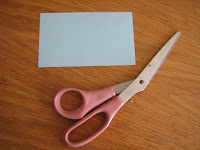Who Dirtied the Water is an excellent activity found in the Access Excellence Fellows Collection.
In short...
...you begin with some nice clean water from an undisturbed lake. Beavers come and add some wood chips to the lake and a river washes sand into the lake. People begin to settle the area and their waste enters the lake. Soil from farm fields washes into the lake. Eventually a city grows there, with houses, laundromats, factories, etc. Each of these new additions adds something to the lake.
As you read the story, students come and add the material to the water. Periodically throughout the story, you ask the students if they'd want to swim in that water, eat fish caught in that water, or boat in that water.
It's a powerful demonstration of what can happen to a water source over time. And it's great for staring a discussion. Students will have all different ideas of how dirty is too dirty. And at the end, you get to the big questions - who made the water dirty and even bigger - who's responsible for cleaning up the water.

It's a fantastic activity. I most recently used it as part of the local library's summer reading program. Since there were young (preschool) children taking part, I made a few changes.
I made a name tag for each part, which contained a picture as well as the name. The film canisters were labeled with pictures that matched those on the name tags. These modifications made it more meaningful for children who are not yet reading, as well as making it easier for them to participate.
For a nice progression of activities, start with Earth Ball Catch (land vs water on Earth), then do Earth's Water Necklaces (salt water vs. fresh water on Earth), and then do Who Dirtied the Water (take care of the tiny amount of fresh water available).










































